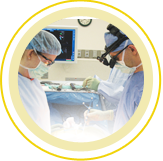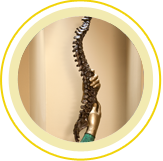Father Time marches on and there is little we can do about it. We may try to cover up those gray hairs, but they just keep coming. Spinal degeneration is also a natural part of aging. Spondylosis is a general or umbrella term to describe symptoms related to degenerative changes in the spine. Understanding the signs and symptoms of spondylosis will alert you to problems as you get older.
A Common Problem
Most of the time spondylosis is used to describe osteoarthritis of the spine, but it can also refer to any degeneration of the spine. The wear and tear on our spine increases as we age, and we can experience spondylosis in several areas of our spine.
It can affect our neck known as cervical spondylosis. 85% of adults over the age of 60 suffer with this condition according to the American Academy Of Orthopedic Surgeons.

Lumbar spondylosis affects the lower back.
Thoracic spondylosis affects the middle part of the back.
Multilevel spondylosis affects several parts of the back.
How We Are Affected
Not everyone experiences signs and symptoms of spondylosis, but stiffness and pain are the common denominators.
- The most common symptoms are stiffness and pain after inactivity, waking up in the morning or after a nap.
- Abnormal sensations are another sign like tingling and numbness known as paresthesia.
- Patients with spondylosis will begin to have a limited range of motion.
- Pain the shoulder, arm, and hand due to bulging or herniated discs pinching a spinal nerve.
- If the lower back is affected, pain may be in the buttocks and feel like a sciatica type of nerve pain.
Sometimes spondylosis can affect the alignment of the back making it difficult to stand upright.
Some of the more particular types of spondylosis are as follows:
- Facet joint osteoarthritis causes pain during strenuous activity or after an extended inactivity.
- Spinal stenosis is an abnormal narrowing of the spinal canal causing leg pain when walking.
- Degenerative disc disease causes pain when a disc becomes dehydrated and loses some function. This causes low back pain, neck pain and possibly leg or arm pain too.
What You Can Do
You can’t turn back the clock, but to overcome any stiffness or pain from spondylosis, stay active, stop smoking, and lose some weight. Certain conditions like diabetes can increase your risk for developing spondylosis.
If you are diagnosed with spondylosis, follow your doctor’s recommendations to ease pain and stiffness. Surgery is usually a last resort.
Contact Spine & Scoliosis Specialists at 336.333.6306, or request an appointment online, if you are experiencing any of the signs and symptoms of spondylosis.



